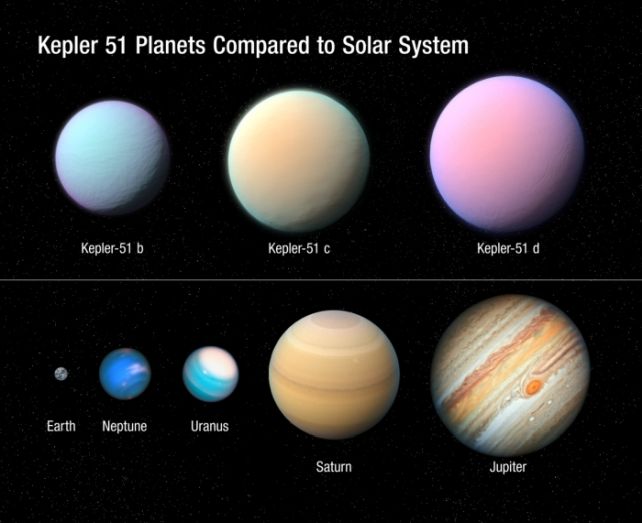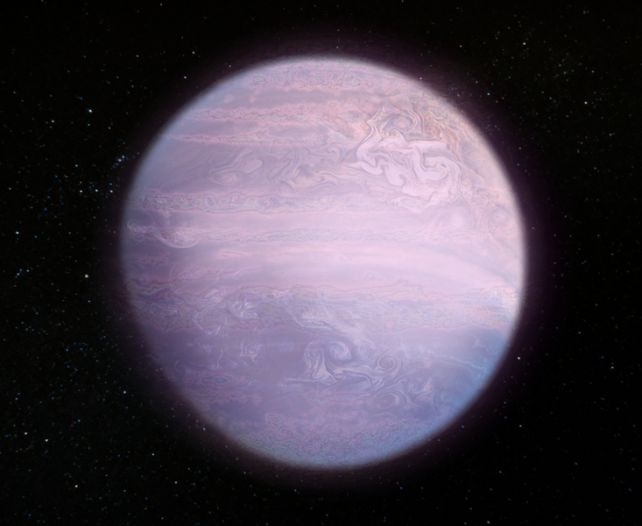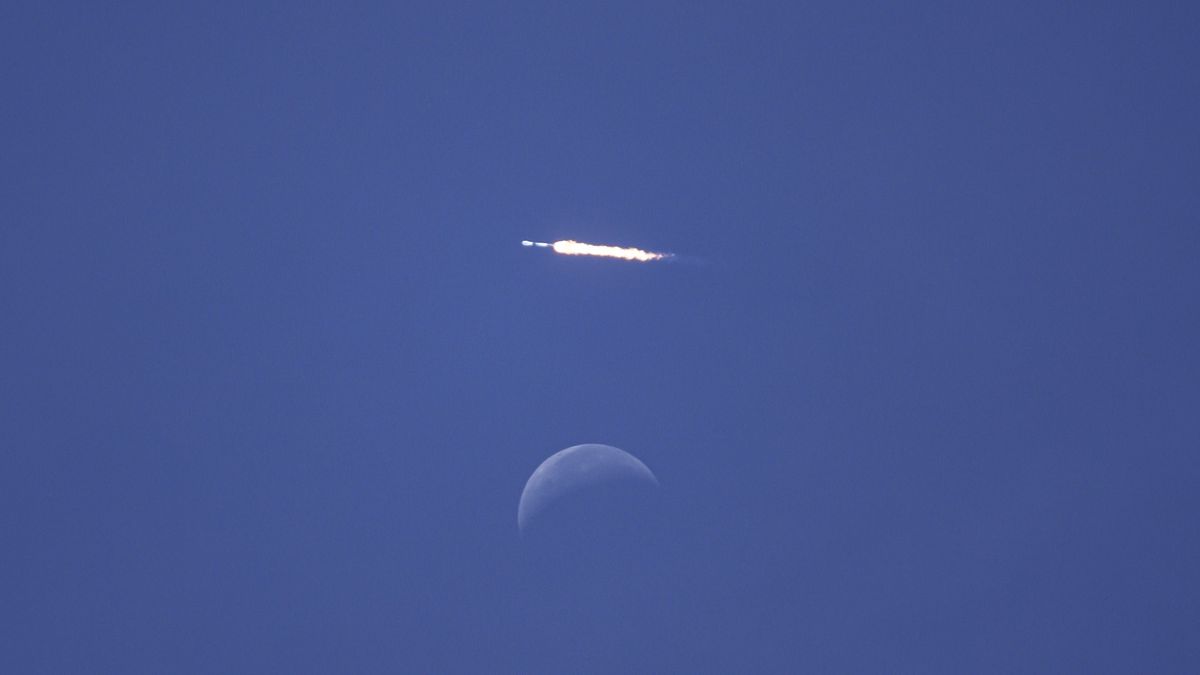Some 2,600 light-years from our own Solar System dwells one of the most peculiar planetary systems in the entire galaxy.
Called Kepler-51, the Sun-like yellow dwarf star was found in 2012 to have three exoplanets in its orbit; each, it would turn out, with a density lighter than cotton candy, putting them all in a rather adorably named category of super-puff worlds.
Now astronomers have found a fourth, and they are both thrilled and agog.
“Super puff planets are fairly rare, and when they do occur, they tend to be the only one in a planetary system,” says planetary scientist Jessica Libby-Roberts of The Pennsylvania State University.
“If trying to explain how three super puffs formed in one system wasn’t challenging enough, now we have to explain a fourth planet, whether it’s a super puff or not. And we can’t rule out additional planets in the system either.”

The strange nature of the three known exoplanets orbiting Kepler-51 was established in 2019, when observations allowed astronomers to make detailed measurements of the exoplanets’ radii and masses. These measures were in turn used to calculate their densities, which at less than 0.1 grams per cubic centimeter revealed the three worlds all fell under the category of super-puff.
A team of astronomers co-led by Libby-Roberts and Kento Masuda of Osaka University first got a hint that there might be even more to the system than meets the eye when they set out to catch one of those three exoplanets in transit. That’s when the exoplanet passes between us and its star, allowing us to make measurements of planetary properties based on the faint dip in the star’s light.
Because the orbital timings of the exoplanets had already been measured, this should have been pretty straightforward. But when they turned telescopes to Kepler 51 to catch the transit with the Apache Point Observatory (APO) and JWST, things didn’t go according to plan.

“Thank goodness we started observing a few hours early to set a baseline, because 2:00 am came, then 3, and we still hadn’t observed a change in the star’s brightness with APO,” Libby-Roberts says.
“After frantically re-running our models and scrutinizing the data we discovered a slight dip in stellar brightness immediately when we started observing with APO, which ended up being the start of the transit – two hours early, which is well beyond the 15-minute window of uncertainty from our models!”
Something had to be awry, so the team scrambled to find out what it was. They carefully pored over data on transit timings obtained by NASA’s planet-hunting space telescope TESS, and archival observations from several ground-based telescopes. They also made new observations using Hubble and the Palomar Observatory.
After carefully going back over their numbers to make sure no errors had been made, the only explanation that fit all the data was the presence of an unseen fourth exoplanet, gravitationally tugging the other three in an intricate orbital dance that influenced their transit timings.
frameborder=”0″ allow=”accelerometer; autoplay; clipboard-write; encrypted-media; gyroscope; picture-in-picture; web-share” referrerpolicy=”strict-origin-when-cross-origin” allowfullscreen>
This fourth exoplanet would be named Kepler-51e. The other three are Kepler-51b, Kepler-51c, and Kepler-51d.
“We conducted what is called a ‘brute force’ search, testing out many different combinations of planet properties to find the four-planet model that explains all of the transit data gathered over the past 14 years,” Masuda explains.
“We found that the signal is best explained if Kepler-51e has a mass similar to the other three planets and follows a fairly circular orbit of about 264 days – something we would expect based on other planetary systems. Other possible solutions we found involve a more massive planet on a wider orbit, though we think these are less likely.”
Since Kepler-51e hasn’t been observed transiting, it’s possible that its orbit is not aligned with our angle of observation. Transits are required to calculate stellar radius, meaning we don’t know how big it might be or what its density is. But just existing in a system with three super-puff exoplanets is an oddity.
More work will need to be done to figure out just what the heck is going on with the Kepler-51 system. One way to do that will be to peer into the atmospheres of the puffy transiting worlds and see exactly what they’re made of – which is the work the team was trying to do in the first place.
As always, the analysis continues.
The research has been published in The Astronomical Journal.









Leave a Comment